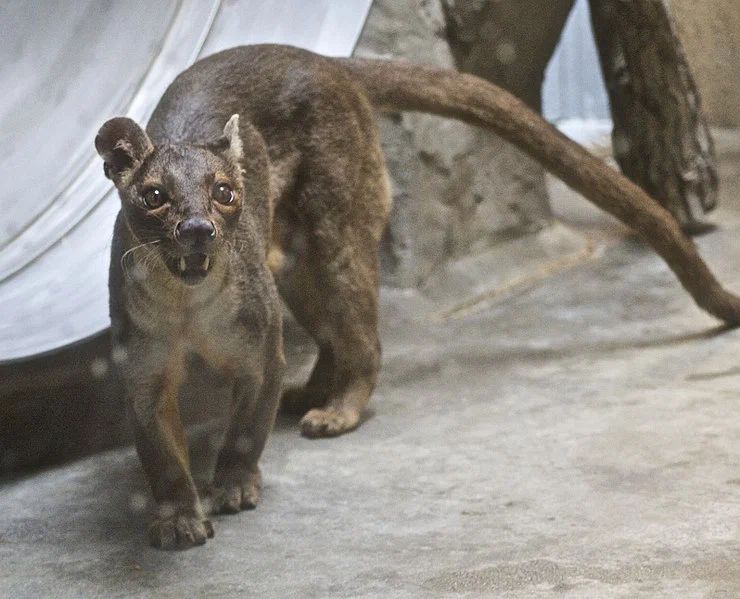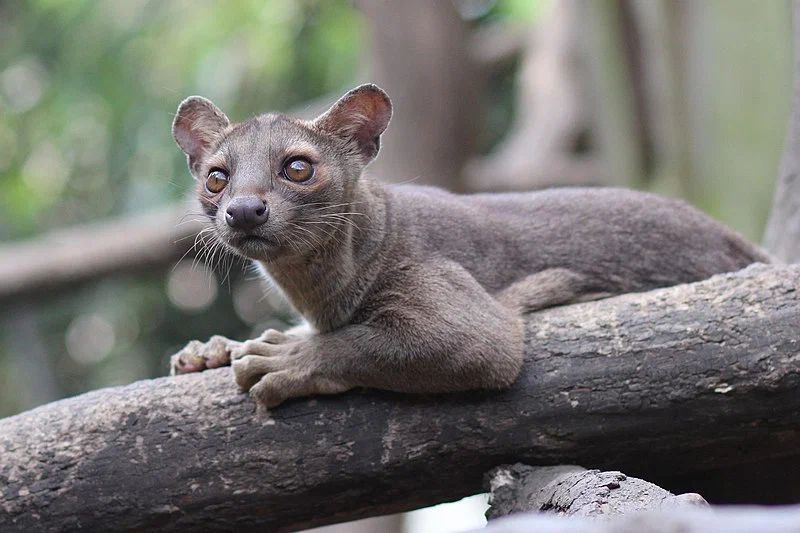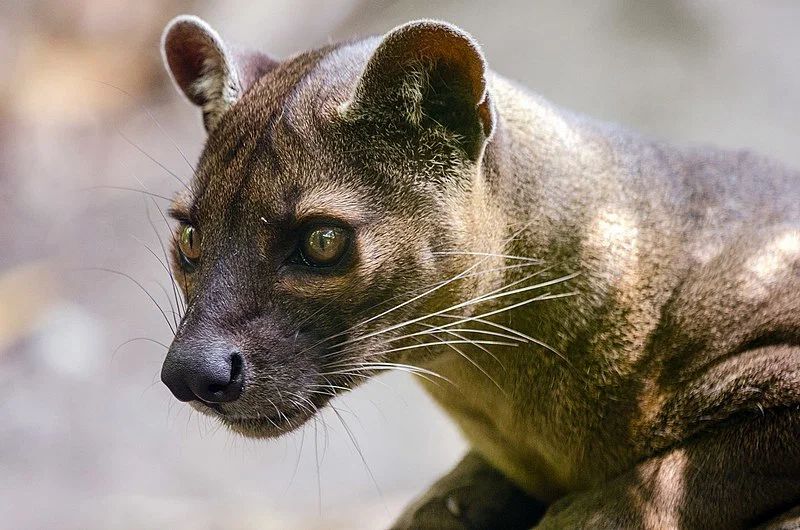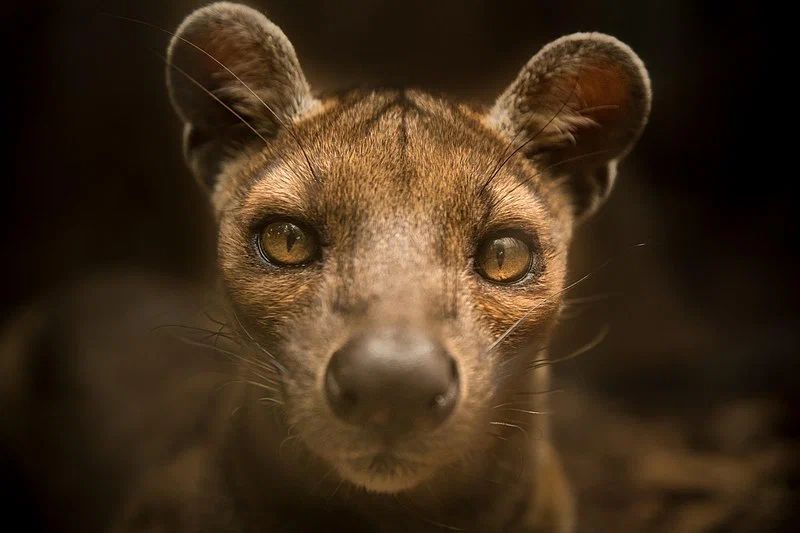Fossa: “The Queen of Madagascar.” The fiercest predator on the island.
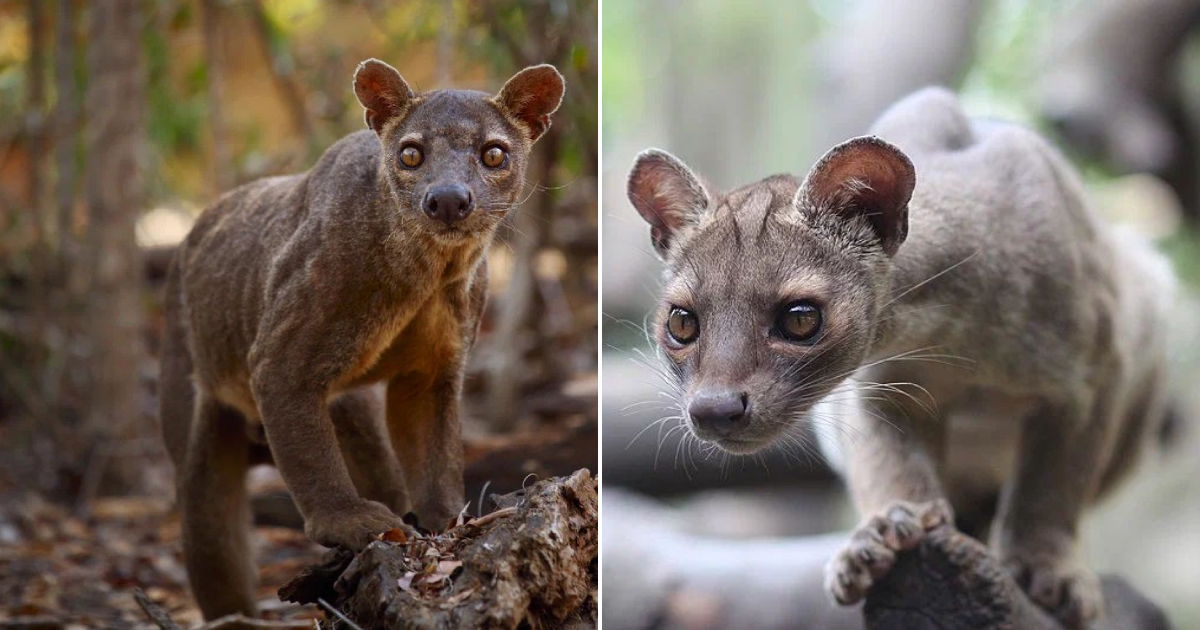
Visually, this animal resembles a wild cat.
However, its closest relative is not a cat but a mongoose. Both animals evolved from a common ancestor about 20-30 million years ago.
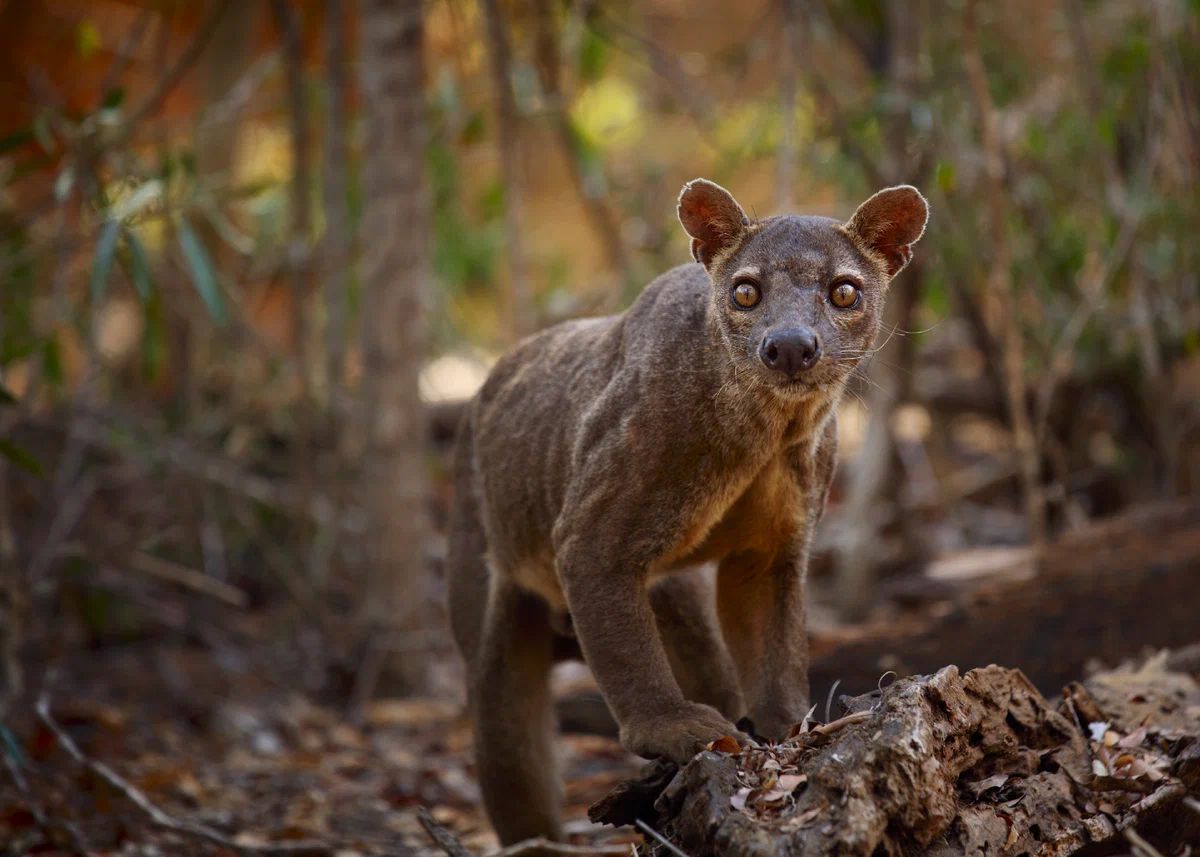
Moreover, the characteristic “bear-like walk” (when walking, the paws touch the ground with the entire sole) clearly indicates that the fossa, with its plantigrade stance, has nothing in common with digitigrade cats that walk on their toes.
Understanding and Forgiveness
Despite the plantigrade walk and close evolutionary ties to mongooses, the fossa does indeed resemble a wild cat in many other aspects.
It can even emit prolonged meows (usually in moments of danger), and its offspring purr like real kittens. So, what else could it be but a cat?
Yes, scientists made a mistake, but in this case, it can be justified.
The Queen of Madagascar
Reaching a length of up to one and a half meters (including the tail) and weighing about 10 kg, fossas are the largest predators in Madagascar.
Semi-retractable claws and flexible ankle joints allow them to climb trees with ease. Fossas can even descend headfirst—a very rare “talent” in the animal kingdom.
Their excellent tree-climbing skills enable fossas to hunt their favorite prey—lemurs.
However, capturing them is not an easy task.
Lemurs live in groups, and in case of danger, sentinels quickly alert their relatives who swiftly escape, disappearing into the tree canopy.
But the fossa doesn’t get discouraged if it fails to catch a lemur.
There are plenty of other tasty creatures in the trees, such as pigeons.
The fossa silently approaches its potential prey as close as possible and then swiftly attacks—escaping its sharp claws is practically impossible.
If the goal is specifically a lemur, the Madagascan queen is capable of setting an ambush by hiding in a tree hollow. Yes, some waiting will be required, but the result is worth it.
Overall, fossas are not picky eaters.
They can feed on any prey they manage to find: reptiles, amphibians, and insects.
Living by Their Own Rules
Previously, it was believed that fossas were primarily active at night, like most predators with similar lifestyles. Including cats.
The “queen” thought about it and agreed—now she hunts at any time of day when she feels hungry.
Boys, No Fighting
In the wild, during the mating season, males often engage in fights for the opportunity to spend time with a female.
Fossas don’t have such a problem because the female is ready to give a moment of attention to any interested male. The reason behind this behavior is unclear. But at least the males don’t fight.

